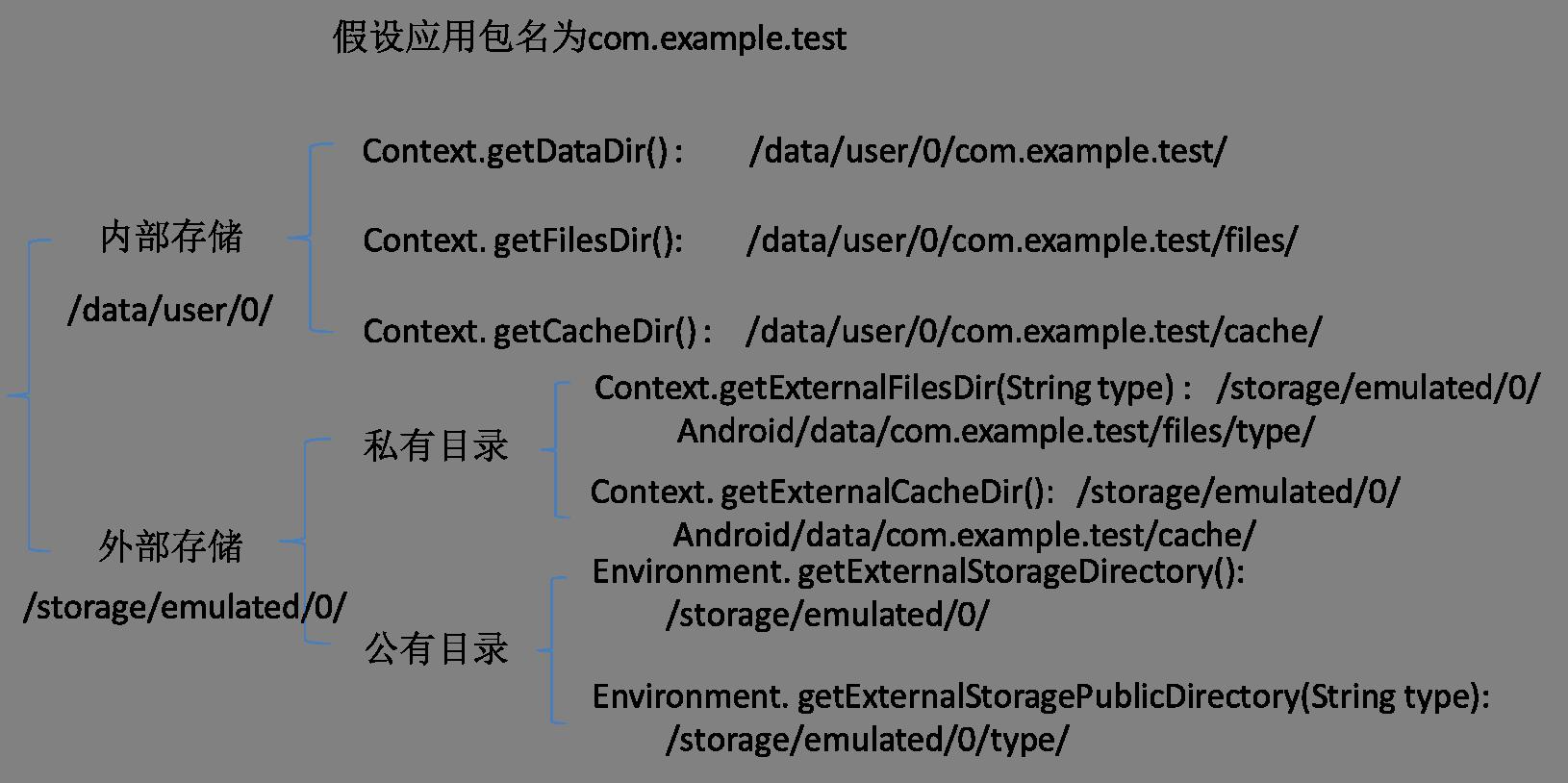Android中存储目录认识
Posted 笪笠
tags:
篇首语:本文由小常识网(cha138.com)小编为大家整理,主要介绍了Android中存储目录认识相关的知识,希望对你有一定的参考价值。
1、存储基本认识

参考自:https://blog.csdn.net/u010937230/article/details/73303034
其他:
(1)存储权限:应用对内部存储和外部存储私有目录读写不需要申请权限,对外部存储的公有目录读写需要获取android.permission.READ_EXTERNAL_STORAGE和android.permission.WRITE_EXTERNAL_STORAGE权限,之后才能进行Environment.getExternalxxxxx()相关目录的读写,而这两个权限在安卓10及以后的版本中将逐渐收紧。
(2)清除数据: 表示清除内部存储和外部存储私有目录下的所有文件
清除缓存:表示清除getCacheDir()和getExternalCacheDir()两个目录下的文件。
应用卸载:应用卸载后会清除数据, 外部存储下除私有目录外,其他目录都不能通过清除数据和清除缓存来删除残留文件,这也是应用卸载后文件残留的原因。
(3)应用双开:应用双开的情况下, 上述目录会将目录中的0替换为对应的数字, 该数字与手机厂商有关,如将/data/user/0/com.example.test/替换为/data/user/999/com.example.test/
2、五种存储方法存储目录分析
2.1、SharedPreferences存储
通常使用如下代码获取SharedPreferences实例:
SharedPreferences preferences = context.getSharedPreferences("test", MODE_PRIVATE);
getSharedPreferences是Context类的一个抽象方法,其具体实现在android.app.ContextImpl类中:
@Override
public SharedPreferences getSharedPreferences(String name, int mode) {
// At least one application in the world actually passes in a null
// name. This happened to work because when we generated the file name
// we would stringify it to "null.xml". Nice.
if (mPackageInfo.getApplicationInfo().targetSdkVersion <
Build.VERSION_CODES.KITKAT) {
if (name == null) {
name = "null";
}
}
File file;
synchronized (ContextImpl.class) {
if (mSharedPrefsPaths == null) {
mSharedPrefsPaths = new ArrayMap<>();
}
file = mSharedPrefsPaths.get(name);
if (file == null) {
file = getSharedPreferencesPath(name);
mSharedPrefsPaths.put(name, file);
}
}
return getSharedPreferences(file, mode);
}
public File getSharedPreferencesPath(String name) {
return makeFilename(getPreferencesDir(), name + ".xml");
}
private File getPreferencesDir() {
synchronized (mSync) {
if (mPreferencesDir == null) {
mPreferencesDir = new File(getDataDir(), "shared_prefs");
}
return ensurePrivateDirExists(mPreferencesDir);
}
}
于是对名称为test的SharedPreferences, 其存储文件为test.xml, 存储目录为Context.getDataDir() + "shared_prefs", 是在内部存储中,即/data/user/0/com.example.test/shared_prefs。
2.2、SQLite数据库存储
同样的,获取数据库文件的方法为public File getDatabasePath(String name),内部数据库文件目录为
private File getDatabasesDir() {
synchronized (mSync) {
if (mDatabasesDir == null) {
if ("android".equals(getPackageName())) {
mDatabasesDir = new File("/data/system");
} else {
mDatabasesDir = new File(getDataDir(), "databases");
}
}
return ensurePrivateDirExists(mDatabasesDir);
}
}
databases目录与shared_prefs目录同级。
2.3、文件存储
文件存储目录主要看需求,应用私有数据应当存储在内部私有存储或者外部私有存储, 像媒体文件等可以存放在DCIM等目录。
2.4、Content Provider
Content Provider存储目录要看其所属的应用将相关的数据存放在哪个位置, 例如通讯录、通话记录、短信等数据,由对应的应用进行管理。
2.5、网络存储数据
应用从网络中获取数据, 对应的数据由响应的服务器进行管理。
以上是关于Android中存储目录认识的主要内容,如果未能解决你的问题,请参考以下文章